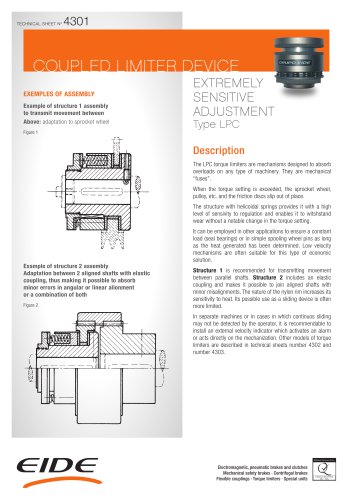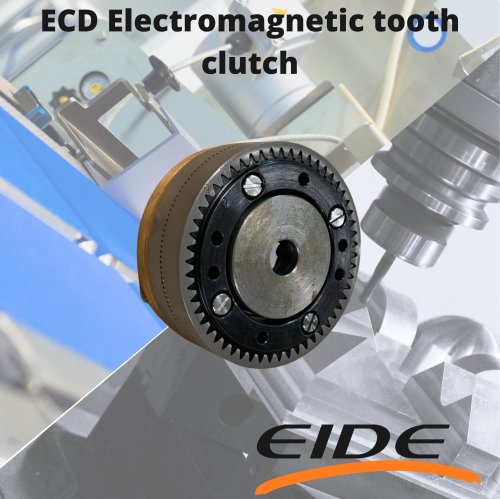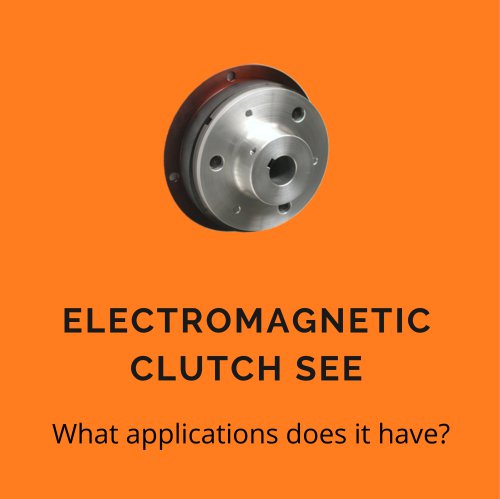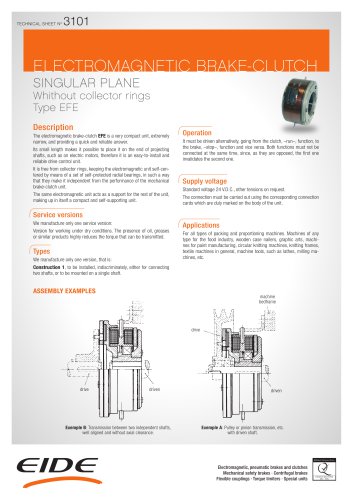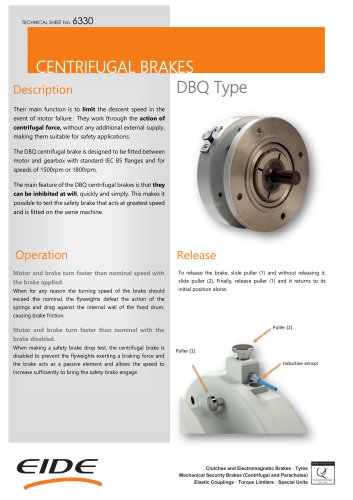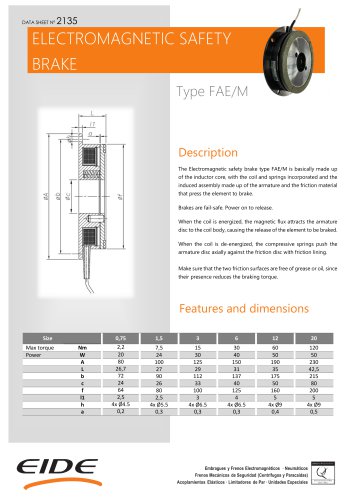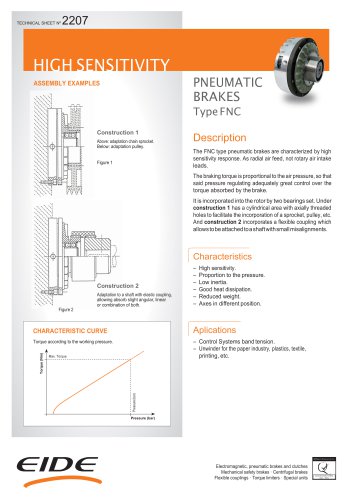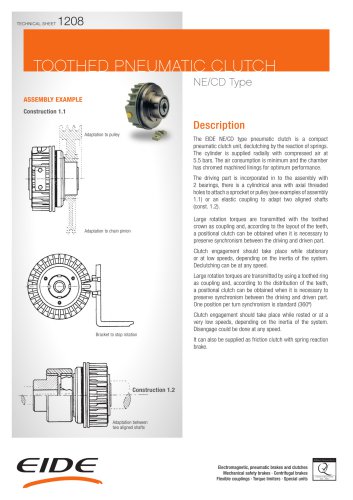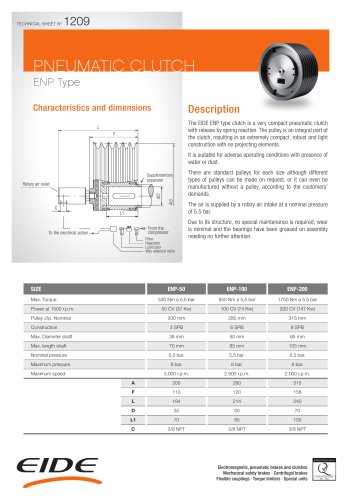 Website:
EIDE
Website:
EIDE
Catalog excerpts

COUPLED LIMITER DEVICE EXEMPLES OF ASSEMBLY Example of structure 1 assembly to transmit movement between Above: adaptation to sprocket wheel Figure 1 EXTREMELY SENSITIVE ADJUSTMENT Type LPC Description The LPC torque limiters are mechanisms designed to absorb overloads on any type of machinery. They are mechanical “fuses”. When the torque setting is exceeded, the sprocket wheel, pulley, etc. and the friction discs slip out of place. The structure with helicoidal springs provides it with a high level of sensivity to regulation and enables it to witshstand wear without a notable change in the torque setting. Example of structure 2 assembly Adaptation between 2 aligned shafts with elastic coupling, thus making it possible to absorb minor errors in angular or linear alionment or a combination of both Figure 2 It can be employed in other applications to ensure a constant load (seal bearings) or in simple spooling wheel pins as long as the heat generated has been determined. Low velocity mechanisms are often suitable for this type of economic solution. Structure 1 is recommended for transmitting movement between parallel shafts. Structure 2 includes an elastic coupling and makes it possible to join aligned shafts with minor misalignments. The nature of the nylon rim increases its sensitivity to heat. Its possible use as a sliding device is often more limited. In separate machines or in cases in which continuos sliding may not be detected by the operator, it is recommendable to install an external velocity indicator which activates an alarm or acts directly on the mechanization. Other models of torque limiters are described in technical sheets number 4302 and number 4303. Electromagnetic, pneumatic brakes and clutches Mechanical safety brakes · Centrifugal brakes Flexible couplings · Torque limiters · Special
Open the catalog to page 1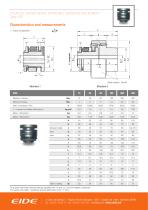
*In all sizes, the limiter devices shall be supplied with “d” and “d1” contour heights o prebored. For pieces with width 1 assembly shall be performed in the “T” form.
Open the catalog to page 2All EIDE catalogs and technical brochures
-
ECD
3 Pages
-
FNB
3 Pages
-
FPC
9 Pages
-
SER
4 Pages
-
SEE
4 Pages
-
SED
4 Pages
-
NE
4 Pages
-
FNAM & FNA
4 Pages
-
DBQ
5 Pages
-
Escobillas y Portaescobillas
1 Pages
-
LPB
2 Pages
-
NEF
2 Pages
-
GEF
2 Pages
-
EFE
2 Pages
-
FNB
1 Pages
-
DBQ
2 Pages
-
FIP
2 Pages
-
FAE/M
1 Pages
-
FNH
1 Pages
-
FZ
2 Pages
-
FNC
2 Pages
-
FAE
2 Pages
-
EC
2 Pages
-
FPC
2 Pages
-
ECD
2 Pages
-
SED
2 Pages
-
SER
2 Pages
-
SEE
2 Pages
-
EN
1 Pages
-
NE/CD
2 Pages
-
NE
2 Pages
-
ENP
2 Pages

